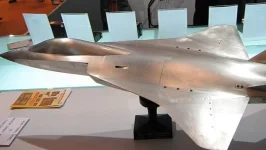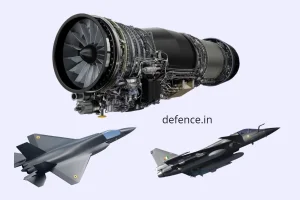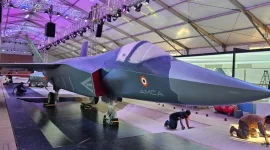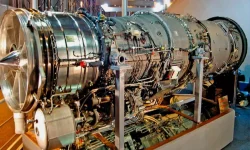- Views: 1K
- Replies: 8
The Indian government is considering the purchase of fifth-generation stealth fighter jets from allied nations as a stopgap measure to counter growing regional threats.
Defence Secretary Rajesh Kumar Singh confirmed this significant policy consideration, highlighting the urgent need to address the Indian Air Force's (IAF) decreasing squadron strength while its indigenous stealth fighter program is under development.
This move is intended to bridge a critical capability gap as the IAF's fleet is currently at 31 squadrons, well below the sanctioned strength of 42.
The confirmation signals a pragmatic approach to national security as India's own fifth-generation platform, the Advanced Medium Combat Aircraft (AMCA), is not expected to be inducted until around 2035.
The development of the AMCA, a sophisticated twin-engine stealth fighter being designed by the Aeronautical Development Agency (ADA) and Hindustan Aeronautics Limited (HAL), received formal approval in May 2025.
While the AMCA is central to India's long-term air power strategy, its decade-long timeline necessitates an interim solution to maintain a tactical edge in the region.
The primary motivation for this potential acquisition is the evolving security landscape.
China has already operationalised its advanced J-20 stealth fighters and is developing the J-35. Reports also indicate that Pakistan may acquire the J-35 from China, which would significantly alter the strategic balance in South Asia.
Speaking recently, Air Chief Marshal AP Singh acknowledged that an "off-the-shelf" purchase of foreign jets could be an option if Pakistan's air capabilities are substantially enhanced, though he stressed that the indigenous AMCA program remains the top priority.
While the Defence Secretary did not name specific aircraft, defence analysts suggest the leading candidates are the American Lockheed Martin F-35 Lightning II and Russia's Sukhoi Su-57.
The United States has previously indicated a willingness to offer the F-35, a combat-proven platform known for its advanced sensors and networked warfare capabilities.
Russia, a traditional defence partner, has proposed co-manufacturing its Su-57 in India, potentially with a full transfer of technology.
The decision to explore a foreign purchase is part of a broader defence modernization strategy.
A high-level committee, chaired by the Defence Secretary and formed in late 2024 to address the IAF's capability shortfalls, recommended a balanced approach of strategic acquisitions alongside robust indigenous development.
This multi-pronged strategy is reflected in the planned ₹2 lakh crore in defence contracts for the upcoming fiscal year, which includes funding for the AMCA project as well as other key acquisitions.
However, a foreign acquisition presents significant challenges.
The F-35 comes with a high price tag, estimated between $80 to $110 million per aircraft, and is subject to strict U.S. end-user agreements that could limit operational independence and create interoperability issues with India's existing Russian-origin fleet.
Conversely, the Su-57 has faced scrutiny over its stealth characteristics and engine reliability. India had previously been a partner in a joint fifth-generation fighter program with Russia, known as the FGFA, but withdrew in 2018 citing concerns over the aircraft's performance and unmet technological benchmarks.




